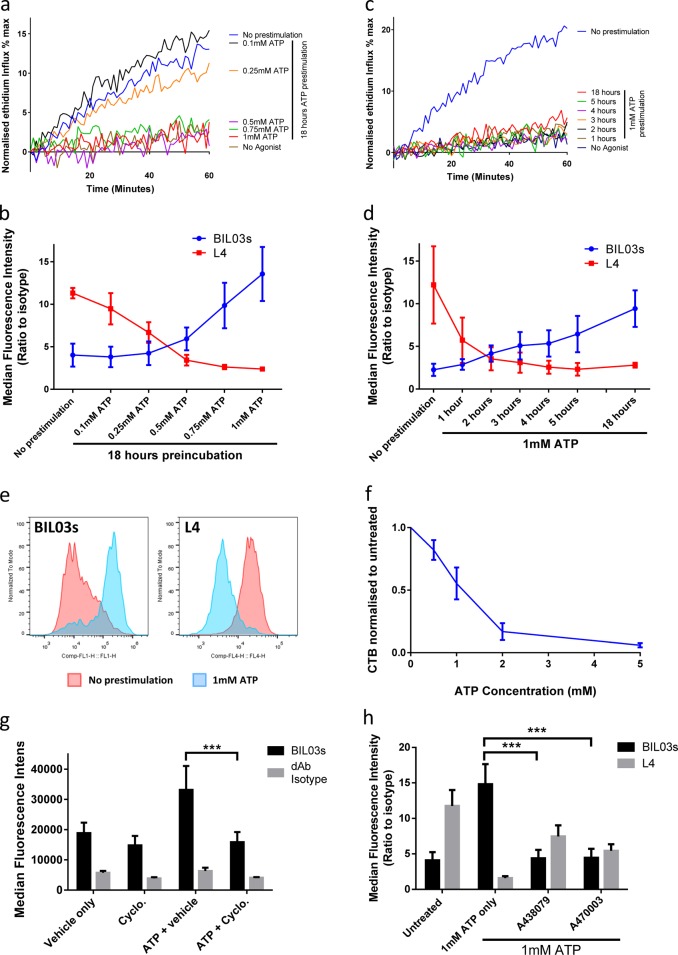Fig. 4.
nfP2X7 expression can be induced by mimicking the high ATP concentration present in the tumour microenvironment. a, b RPMI-8226 cells were treated with ATP at the indicated concentration for 18 h. After treatment, a normalised ethidium influx in response to 0.5 mM BzATP stimulation was measured (mean of three independent experiments is shown) and b flow cytometry was used to quantify binding of BIL03s and L4 to live RPMI-8226 cells (mean and SEM from three independent experiments are shown). c, d RPMI-8226 cells were treated with 1 mM ATP for the indicated length of time. After treatment, c normalised ethidium influx in response to 0.5 mM BzATP stimulation was measured (mean from three independent experiments is shown) and d flow cytometry was used to quantify binding of BIL03s and L4 to live RPMI-8226 cells (mean and SEM from three independent experiments are shown). e Representative flow cytometry plots showing BIL03s and L4 binding to live RPMI-8226 cells before and after 1 mM ATP treatment for 18 h. f RPMI-8226 cells were treated with ATP at indicated concentration for 18 h before measurement of the number of live cells using CellTitre-Blue (CTB) assay. CTB fluorescence was normalised to untreated cells. Mean and SEM from three independent experiments are shown. g RPMI-8226 cells were treated with 250 μg/ml Cycloheximide, 1 mM ATP or both for 4 h. Flow cytometry analysis showed that increased BIL03s binding following 1 mM ATP treatment was abrogated in the presence of Cycloheximide. Mean and SEM from three independent experiments are shown. Two-way ANOVA with Dunnett’s post test was used to test significance. h RPMI-8226 cells were treated with 1 mM ATP alone or in the presence of P2X7 inhibitors A438079 or A740003 for 18 h. Flow cytometry analysis showed that the ATP-induced increase in BIL03s binding was significantly reduced by P2X7 inhibitors. Mean and SEM from three independent experiments are shown. Two-way ANOVA with Dunnett’s post test was used to test significance. ***P < 0.001

